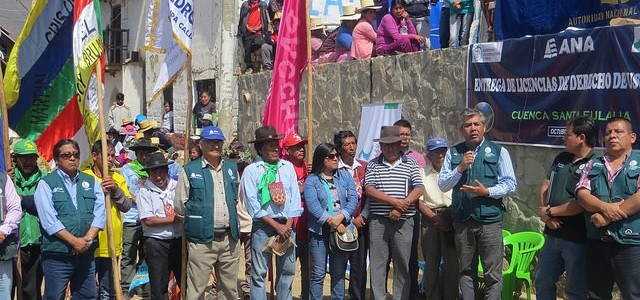Characteristics
As many water issues need broad public support and understanding, raising awareness on issues surrounding water resources is increasingly seen as important. Public awareness means the general level of understanding of a certain topic. So raising awareness for water issues is a way to build a common understanding of water issues and to create shared values on how water should be used and managed.
Raising awareness is not the same as telling people what they are supposed to do. It is explaining issues and providing knowledge so that people can make their own, informed decisions. There are two different areas that activities to raise awareness should cover. One is the more general public awareness, which involves wide-spread acknowledgement and understanding of water issues. The other one is self-awareness, which means understanding the relation between personal water use and natural and societal impacts. Related to self-awareness, citizen science programmes can be a fun way for the public learn about and participate in monitoring their local water resources.
The aim of raising public awareness for water issues is to engage the public in topics such as: water conservation; hygienic water use; or preservation of ecosystems. Other issues are the development of self-regulating water institutions, increasing the willingness to pay or contribute to water services; awareness for planning for emergencies; and strengthening political will. Ideally, public awareness is not a one-way communication, but an interaction of many active stakeholders, who influence each other and provide social control by mutually reinforcing agreed sets of values.
Awareness can be raised through a variety of channels which should be coordinated in a bigger communications strategy. Those channels include water campaigns, engaging with environmental NGOs and community groups, making information available to the general public through inventories, for example, and providing information to the public through product labelling etc.
Water campaigns usually address a particular issue, which is relevant to the community. The message of a campaign should be clear and simple, associated with a logo or a consistent image. In order to reach maximum effect, a campaign should be sustained over time. Choices need to be made regarding the reach of the campaign, the target group, the desired change in perception and/or behaviour, and the likely influence of the target group on the campaign outcomes. Involving a campaign specialist who has experience in managing similar programmes can improve the success rate of a campaign. Campaigns can use a number of communication methods such as
- Direct use of conventional media (printed media, TV, radio) and/or non-conventional media (messages on water bills, games, transport tickets, comic books, etc.), through the visual and performing arts;
- Organization of large events and/or endorsement by celebrities (generating media attention);
- Use of existing networks (religious networks, social movements, NGO networks, business associations);
- Use of logos (e.g. a water drop) to give identity to the campaign.
Public access to information has been powerful in raising environmental awareness. Examples include the Toxic Release Inventory in the US where companies are required to publish a list of all their toxic emissions, which can then be used in campaigns by NGOs and lobby groups. In the water domain, a requirement to publish information can be a powerful reinforcement of other policy tools such as pollution charges. Corporate Social Responsibility reporting is another mechanism for raising awareness, encouraging companies and institutions to report their social and environmental performance. This also promotes environmental Stewardship.
Such information can also be linked to standards for trade, putting pressure on exporters to improve practise. Another benefit is that better public access to information makes the water sector more transparent. Ideally, this could help build trust between different groups of water users (see Tool B4.04 on water integrity).
Product labelling or environmental certification is a useful tool for raising awareness. “Blue” and “green” labels have been used in water saving devices and eco-friendly products and services. They have encouraged changes in consumption patterns and triggered industries to adopt new standards in often essentially traditional markets like plumbing fixtures or water conveyance. Performance indicators and descriptions on product labels (e.g. water consumed in washing machine cycles, content of phosphorus in detergents) are tools which provide information to consumers about water appliances.
Product labelling can encourage the industrial sector to adopt new standards and essentially transform traditional markets. This sort of product labelling introduces a profit motive into conservation, and can change producer and consumer behaviour (see Tools C7). Another example of product labelling which is mostly used by NGOs is the Water Footprint (C8.03) which indicates the water used in the production and transportation of a product.
Lessons learned
- The impact of a water campaign increases if it can be closely followed by tangible action, such as installing water saving devices or cleaning watercourses.
- Campaigns are most effective when they use a well-targeted range of media.
- The use of existing networks can lower the cost of campaigns, and increase the impact.
- Blue and green product labelling has benefited from strong professional associations providing standards.
- The provision of information needs careful management to ensure its relevance and credibility.

